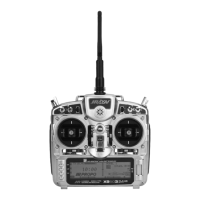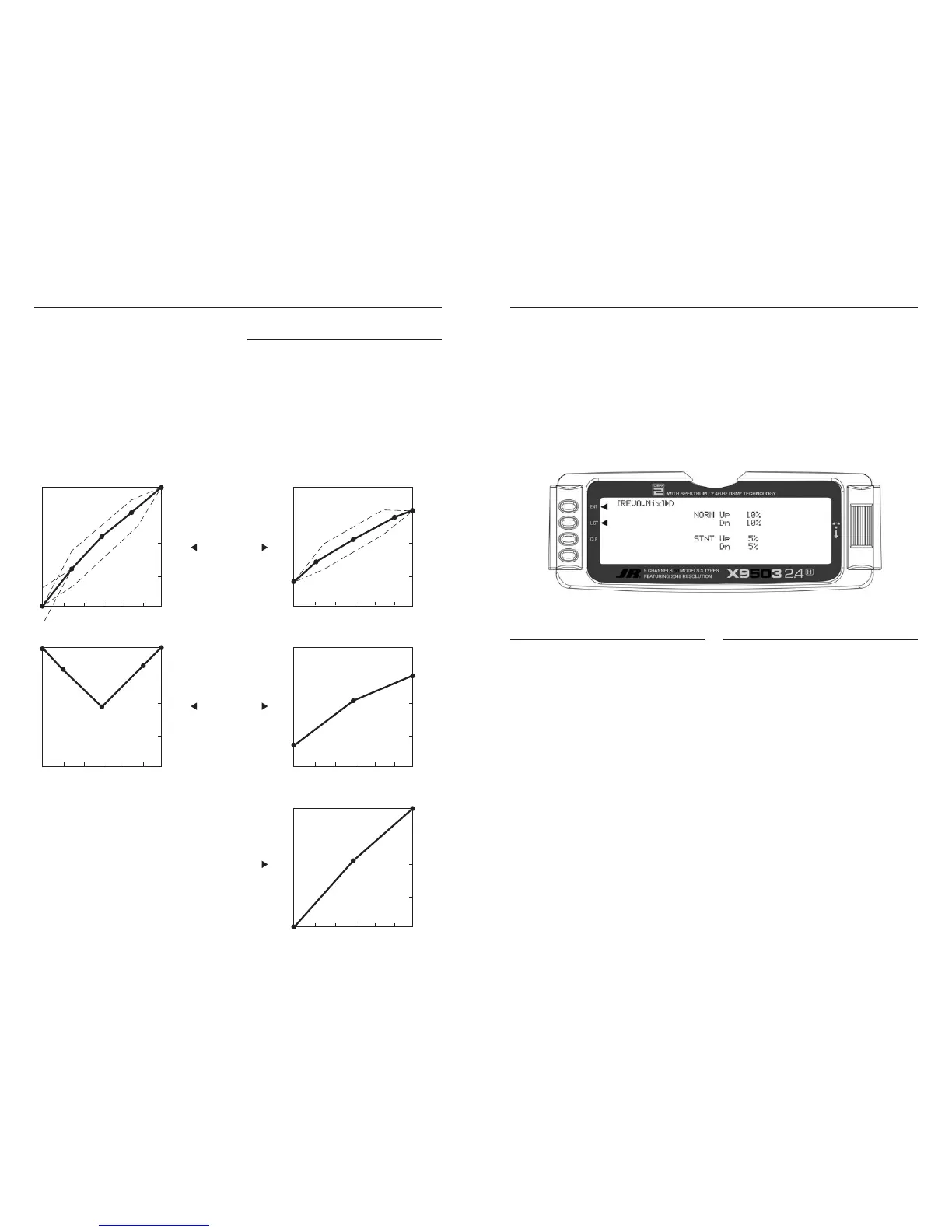The Hovering Pitch lever operates in the same manner as
the Hovering Throttle knob. It is only operable while the
flight mode switch is in the ‘’N’’ (normal) position, and its
function is to shift the middle portion of the curve upward
or downward.
Example of Throttle Curve and Pitch Curve
Settings
An example of throttle curve and pitch curve settings for
aerobatic specifications are shown below in the graphs.
Details of the curves differ depending on the helicopter
specifications. In these examples, the throttle open-close
stroke and autorotation pitch stroke are set 0 to 100 to
ease your understanding of other curves.
Note: Dotted line indicates Throttle and Pitch curve range/movements using
the Hover Throttle and Hover Pitch levers.
The Revolution Mixing function is for conventional “Rate”
gyros only, and mixes tail rotor with the Throttle and Pitch
Curve functions to counteract torque from the main rotor
blades. When set up correctly, the helicopter should climb
and descend without a tendency to yaw in either direction.
Because torque reaction varies with different power
settings, it is necessary to vary the tail rotor pitch at the
same time. The X9503 2.4 offers two separate revolution
mixing programs, with independent up and down mixing
for each—one for Flight mode position N and the other
for Stunt 1 and Stunt 2 positions. The U (Up) mixing
adjusts the tail rotor compensation for the mid to high
throttle setting and the D, or down, mixing adjusts the
tail rotor compensation for the mid to low throttle setting.
Thus, if you move the throttle from the low to high
position, the tail rotor servo would move from D through
Hover (mid) and to the U setting.
Note: A letter appears directly to the right
of the REVO.MIX on the top of the LCD to
indicate the current throttle stick/mix position
(U for Up, D for Down).
Accessing the Revolution Mixing Function
1. Turn the transmitter ON.
2. Press the LIST key to enter Function Mode.
3. Use the Selector to highlight the
REVO.MIX function, then press to access.
4. Highlight the Revo Mix value to be adjusted, then press
to open the value. Rotate the Selector to increase or
decrease the value as needed.
5. Press the CLR key to reset the values to 0% if needed.
6. To exit the Revolution Mixing function, move the
Selector to highlight LIST, and press.
Setting up Revolution Mixing
Set up the helicopter so that it will hover with the tail
rotor trim centered. Establish the helicopter into a
stable hover, then steadily increase the throttle to
initiate a steady climb. The body of the helicopter will
moves in the opposite direction to the main rotor rotation.
Increase the U, or Up, setting until the helicopter
climbs with no tendency to turn. At a safe altitude,
close the throttle; the helicopter will descend and the
body turn in the same direction as the main rotor rotation.
Increase the D, or down, mix until the helicopter descends
with no tendency to turn. Throttle stick movements should
be slow, and the initial acceleration and deceleration
swings should be ignored.
When throttle is in the hold position (autorotation),
revolution and acceleration mixings are off. The
Acceleration Mixing function compensates for the
main rotor acceleration (and deceleration) torque. The
magnitude and duration of the signal to the tail rotor
depends on the rate of the throttle changes. Thus,
quick, jerky throttle inputs yield more noticeable tail
compensation.

